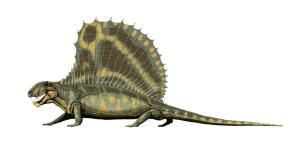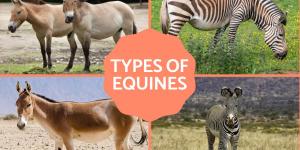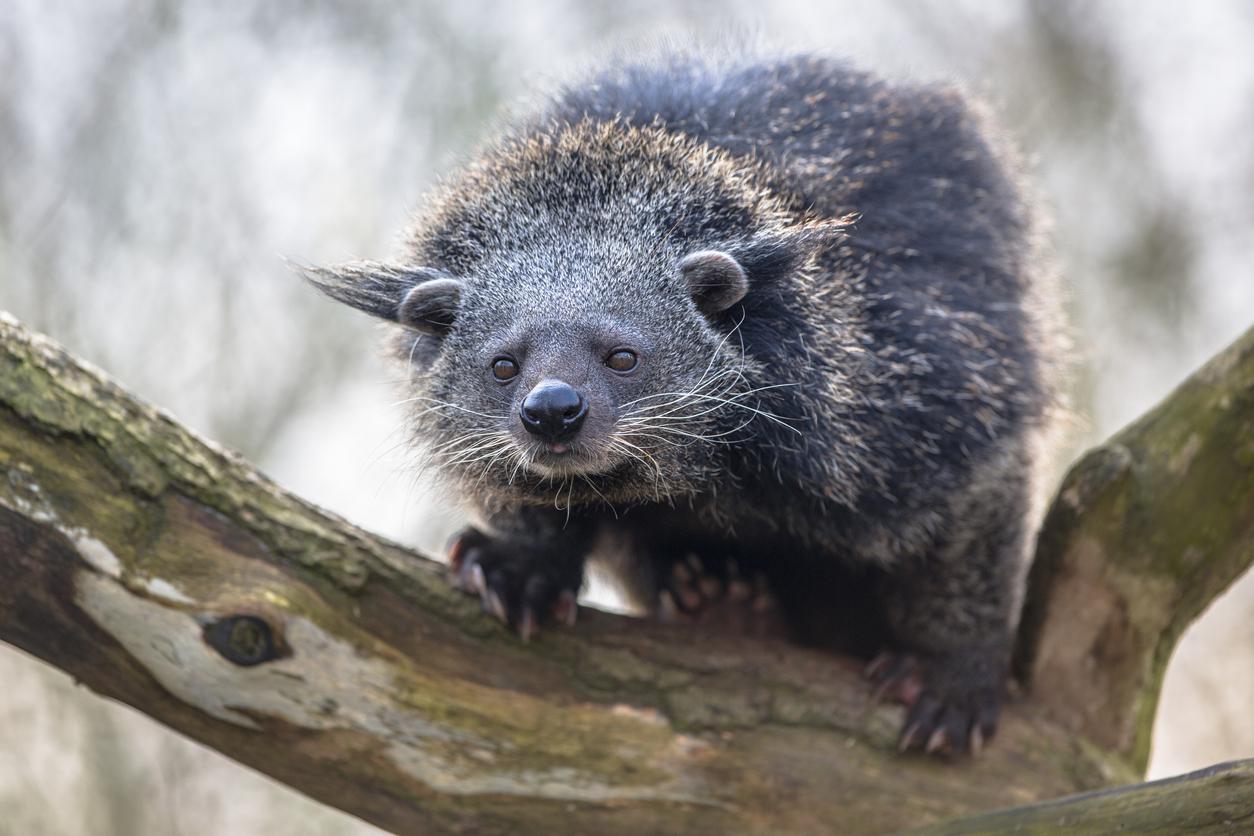What Is a Binturong? - Bearcat Characteristics


The binturong (Arctictis binturong) is a mammal originating from Asia. Their appearance somewhat resembles a cross between a small bear and a cat, hence their common name: the bearcat. They are part of the suborder Feliformia, but are not part of either the cat (Felidae) or bear (Ursidae) families. Instead, they are part of the family Viverridae, which also includes genets and civets. Due to their size, they are the largest member of this family.
Although the binturong may not be well known to you, they play an important part of their own ecosystem. Unfortunately, human interference in their natural habitat has led to the classification of the bearcat as vulnerable. At AnimalWised, we provide further information to answer the question what is a binturong?
Taxonomic classification of the binturong
Since the binturong is part of the Feliformia suborder, they can be considered ‘cat-like’ animals, but this is not the same as being a type of cat. They have their own different characteristics which has resulted them being taxonomically grouped as follows:
- Kingdom: Animalia
- Phylum: Chordata
- Class: Mammalia
- Order: Carnivorous
- Suborder: Feliformia
- Family: Viverridae
- Genus: Arctictis
- Species: Arctictis binturong
Regarding the existence of subspecies of Arctictis binturong, some scientists recognize up to nine. However, more recent studies express the need to review this classification due to various controversies over their groupings[1].
Characteristics of the binturong
As we mentioned, the bearcat is the largest species of viverrid. Their weight ranges between 9-20 kg (19-44 lbs). They can be up to a meter in length, with an additional tail length of 90 cm, almost as long as their body. The binturong has a prehensile tail, meaning it has evolved to grab and hold objects. They are one of the few carnivorous species to have this ability.
A bearcat's coat is black, fairly long and rough in texture. They also have gray hairs which give them a wild appearance. The hair on their face is usually lighter and less abundant than their body hair. They also have long white-haired whiskers. Their ears are small and tufted. Their eyes are also small and reddish-brown in color.
Binturongs are sexually dimorphic, but mainly in size. The females of the species are usually larger than males. Take a look at our related article for more information on sexual dimorphism in animals.
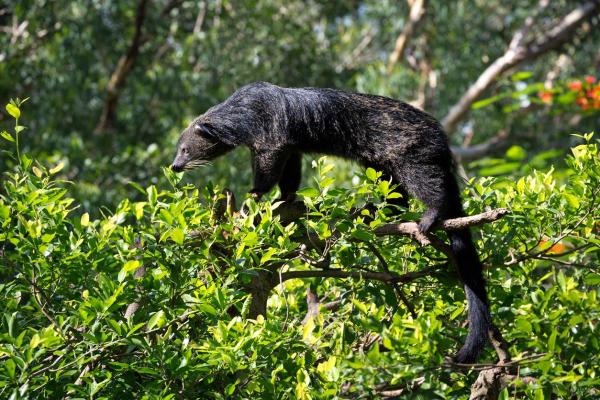
Behavior of the binturong
Although not very territorial, the binturong has solitary habits. They generally avoid others of the same species, except during mating season. They are arboreal animals, meaning they spend a lot of their time in trees. Even with prehensile tails to help climb through the foliage, their weight makes it difficult to jump large gaps. For this reason, they will often go to ground to move from one tree to another.
To take a look at another small arboreal mammal species, check out our article on keeping red pandas as pets.
There are contradictory findings on their most active hours. Some report them as nocturnal or crepuscular animals. Others have indicated they are more active during the day than previously thought[2]. As well as their great climbing ability, they are good swimmers and will get in the water to find fish.
The bearcat mainly communicates through olfactory methods. Both male and female binturongs have anal glands, although the female also has two additional glands next to her vulva. These glands produce secretions which have a distinctive odor which has been likened to the smell of popcorn. They leave these scents on trees to indicate their presence in an area. They can also use vocalizations such as growling, howling and whistling to communicate.
Where does the binturong live?
The binturong is a species native to Asia, specifically in countries such as Bangladesh, Bhutan, Cambodia, China, India, Indonesia, Lao People's Democratic Republic, Malaysia, Myanmar, Nepal, the Philippines, Thailand and Vietnam.
The habitat of the binturong is mainly in evergreen forests, as in the case of Lao People's Democratic Republic. In others, such as the Philippines, it is found in both primary and secondary lowland forests, but also grasslands. They generally live at heights of almost sea level to 400 m above sea level. In rare occasions, it has been sighted almost at 1000 meters above sea level.

What does the binturong eat?
Although taxonomically it is located in the order of carnivorous animals, the diet of the binturong is based mainly on fruits. In particular, they enjoy the fruit of fig trees such as the Ficus altissima species, making their diet mainly frugivorous.
However, they can also consume other parts of plants such as shoots and leaves, as well as insects, fish, small birds, rodents, eggs and even carrion. In a stricter sense, it is an omnivorous animal.
Reproduction of the binturong
Female bearcats mature sexually at two and a half years, while males do so slightly earlier. The species has higher reproductive rates from January to March, although it can reproduce throughout the year. Males are usually on the defensive against females, except when they are receptive. When they are so, they communicate through purrs. Gestation lasts 90-92 days and the litters are usually have two young, although they can have a maximum of six.
Newborn binturong weigh an average of 142 grams, have their eyes closed and are hidden within the mother's fur for the first few days. Weaning occurs between 6 and 8 weeks. Generally, the care of the litter is only done by the mother and it is common to observe the females alone with their young. Some males may share in their care until the young can be independent. In some cases, the family group can be maintained, even when the descendants no longer require parental care.
The binturong is a species with a certain amount of longevity. They are able to live for about 18 years in the wild, while bearcats of over 25 years of age have been recorded in captivity.
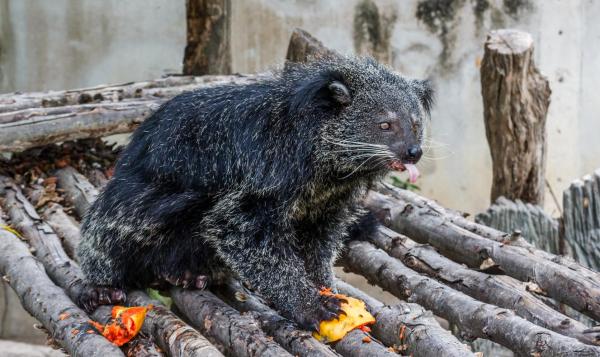
Binturong conservation and threats to species
The binturong is classified as vulnerable by the IUCN due to its declining population. For this reason, it is rare to observe them in their natural habitat range. In fact, it is estimated that the binturong in some regions is close to local extinction.
Threats to the species include its trafficking for commercialization as pets and hunting for human consumption. In some countries, it is the species that is most kept in cages for exhibition and the sale of its skin is a viable market. Even though in some of the native areas of the bearcat there are protection laws in effect, it is not sufficient. Stricter applications of these methods are required to guarantee the conservation of this animal.
To learn about another threatened cat-like species, take a look at our article on why is the Bengal tiger endangered?
If you want to read similar articles to What Is a Binturong? - Bearcat Characteristics, we recommend you visit our Facts about the animal kingdom category.
1.Veron, G., Debruille, A., Kayser, P., Fernandez, D., & Bourgeois, A. (2020). Genetic diversity and structure of the binturong Arctictis binturong (Carnivora: Viverridae): Status of the elusive Palawan binturong and implications for conservation. Zoological Journal of the Linnean Society, 88(1), 302–318.
https://doi.org/10.1093/zoolinnean/zlz100
2. Willcox, D. H. A., Chutipong, W., Gray, T. N. E., Cheyne, S., Semiadi, G., Rahman, H., Coudrat, C. N. Z., Jennings, A., Ghimirey, Y., Ross, J., Fredriksson, G., & Tilker, A. (2016). Arctictis binturong. The 2016 IUCN Red List of Threatened Species: e.T41690A45217088.
https://dx.doi.org/10.2305/IUCN.UK.2016-1.RLTS.T41690A45217088.en
- Schleif, M. (2013). Arctictis binturong. Animal Diversity Web. University of Michigan. Museum of Zoology. https://animaldiversity.org/accounts/Arctictis_binturong/



